Warren Cantrell reviews a new HBO-acquired documentary from the 2012 Seattle International Film Festival.
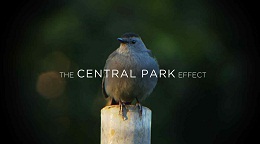 Unless a person is well-versed in ornithology and other bird-related terminology, hearing a term like “The Central Park Effect” might conjure up notions of marijuana-related silliness following an especially deep inhale at a concert being held in New York City’s urban garden. This would be an incorrect (though somewhat understandable) assumption, for as the documentary of the same name explains, The Central Park Effect details a phenomenon well-known amongst bird-watchers. Twice a year, in the Spring (during the flight north to breed) and again in the Fall (during their return), a motley assortment of non-indigenous avians descends on New York’s Central Park to rest up, enjoying a collective breather before taking flight once again on their long journey.
Unless a person is well-versed in ornithology and other bird-related terminology, hearing a term like “The Central Park Effect” might conjure up notions of marijuana-related silliness following an especially deep inhale at a concert being held in New York City’s urban garden. This would be an incorrect (though somewhat understandable) assumption, for as the documentary of the same name explains, The Central Park Effect details a phenomenon well-known amongst bird-watchers. Twice a year, in the Spring (during the flight north to breed) and again in the Fall (during their return), a motley assortment of non-indigenous avians descends on New York’s Central Park to rest up, enjoying a collective breather before taking flight once again on their long journey.
For bird-watchers (or “birders” as they call themselves), this is a glorious handful of weeks, for this offers a dizzying array of species in one location that could only be seen two or three at a time in locations as far apart as Florida and Guatemala. For birders, Spring and Fall act like birding all-star games, for what would normally take months of travelling to dozens of locales peppered throughout North and South America can be seen by New York residents who need only hop on a bus or subway.
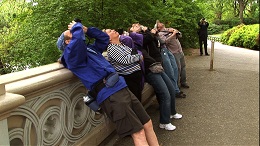 It’s a truly fascinating phenomenon, one The Central Park Effect explains via a series of talking-head interviews and gentle, unobtrusive narration. Birds flying north to Canada in the Spring from warmer temperate zones in the Southern U.S., Mexico, and South America travel up the eastern seaboard, following migratory routes used for millennia. Over time, as the industrialized east coast cities eliminated the patches of forested areas where birds could rest and feed, New York City’s Central Park became a one-stop shop for the migrating flocks, who often land in the one vast green expanse open to them when passing through that area.
It’s a truly fascinating phenomenon, one The Central Park Effect explains via a series of talking-head interviews and gentle, unobtrusive narration. Birds flying north to Canada in the Spring from warmer temperate zones in the Southern U.S., Mexico, and South America travel up the eastern seaboard, following migratory routes used for millennia. Over time, as the industrialized east coast cities eliminated the patches of forested areas where birds could rest and feed, New York City’s Central Park became a one-stop shop for the migrating flocks, who often land in the one vast green expanse open to them when passing through that area.
Nuzzled directly in the heart of Manhattan, Central Park acts as a way-station for the winged travelers, and is a regular stopping point for dozens of different avian varieties that would normally not be seen in the region (except to visit). Naturally, when mating season is finished, these birds follow the same path south, stopping again in Central Park en route home, much like a family on vacation that has found an especially cozy, familiar motel in the middle of nowhere. The scientists and birders in The Central Park Effect speak in just such a manner, giving personal, human characteristics to creatures they clearly adore, and it’s something that infects a viewer watching the documentary.
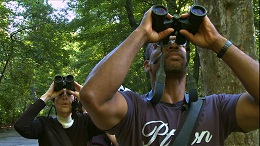 Director Jeffrey Kimball clearly appreciates the passion of the birders he showcases in his documentary, and gives many of them a moment or two so that they can explain their passion. As one of them relates, “It turns every morning into a scavenger hunt. You never know what you’re going to find!” These words are spoken by Chris Cooper, a middle-aged African American gentleman who wanders around Central Park during the Spring season along with other Birders representing age, gender, and ethnic groups as diverse as the city in which they live. Just as New York City is the ultimate cultural melting pot, so too is Birding, where enthusiasts are old, young, male, female, black, white, rich, and poor.
Director Jeffrey Kimball clearly appreciates the passion of the birders he showcases in his documentary, and gives many of them a moment or two so that they can explain their passion. As one of them relates, “It turns every morning into a scavenger hunt. You never know what you’re going to find!” These words are spoken by Chris Cooper, a middle-aged African American gentleman who wanders around Central Park during the Spring season along with other Birders representing age, gender, and ethnic groups as diverse as the city in which they live. Just as New York City is the ultimate cultural melting pot, so too is Birding, where enthusiasts are old, young, male, female, black, white, rich, and poor.
A celebration of Central Park’s unique ornithological charms, along with birding as a whole, the documentary’s true thematic drive is an exploration into what it means to be a bird watcher on a more spiritual level. It would have been easy for director Jeffrey Kimball to simply show off the charming and enthusiastic people who make up the Birding community, but he clearly wants to look deeper, at the yearning within some to find a way to reconnect with nature.
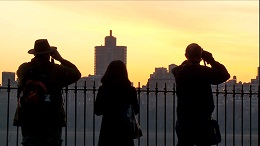 In a place like New York City, one of the most exaggerated examples of urban encroachment and industrialization in human history, there’s a passionate zeal amongst a growing sub-class of citizens to peacefully observe and co-exist with nature; this is a truly fascinating development, one no less striking and ironic than New York City becoming a refuge for an increasingly threatened group of wildlife. As the documentary explains, birds don’t appear in the same numbers as they once have, and there’s a desperate sense of urgency amongst Birders who feel that their unique, treasured connection with nature and the living world around them is becoming increasingly threatened.
In a place like New York City, one of the most exaggerated examples of urban encroachment and industrialization in human history, there’s a passionate zeal amongst a growing sub-class of citizens to peacefully observe and co-exist with nature; this is a truly fascinating development, one no less striking and ironic than New York City becoming a refuge for an increasingly threatened group of wildlife. As the documentary explains, birds don’t appear in the same numbers as they once have, and there’s a desperate sense of urgency amongst Birders who feel that their unique, treasured connection with nature and the living world around them is becoming increasingly threatened.
A subtle warning about the significance of conservation and the importance of maintaining our natural resources, The Central Park Effect never gets too heavy handed with its message, and is mostly content to let the subject speak for itself. Creatively composed and assembled to create a visually pleasing experience, the documentary moves well, and has a smooth, rounded feel to it. The tile-animation vignette that Kimball uses during the bird “collecting” discussion is especially clever, as is the use of the four different seasons to break up the piece.
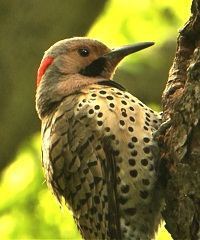 There are some counterpoints to The Central Park Effect which give it a nice balance, including a discussion into the “dorky” nature of the pursuit, something the Birders all seem to take in stride. Clearly, a majority of these folks have heard the jabs and snipes a hundred times before, and simply don’t give a damn. They understand that their hobby isn’t for everyone, and when they speak about birding, one doesn’t get the sense that they are trying to convince, or recruit. Simply put, one is either fascinated by birds enough to commit long hours to skyward-gazing, or one isn’t.
There are some counterpoints to The Central Park Effect which give it a nice balance, including a discussion into the “dorky” nature of the pursuit, something the Birders all seem to take in stride. Clearly, a majority of these folks have heard the jabs and snipes a hundred times before, and simply don’t give a damn. They understand that their hobby isn’t for everyone, and when they speak about birding, one doesn’t get the sense that they are trying to convince, or recruit. Simply put, one is either fascinated by birds enough to commit long hours to skyward-gazing, or one isn’t.
What makes The Central Park Effect so fun is that even if one claims membership to the latter group, there’s enough joy and passionate birding zeal in the film to get them to appreciate and respect the former.





Comments on this entry are closed.